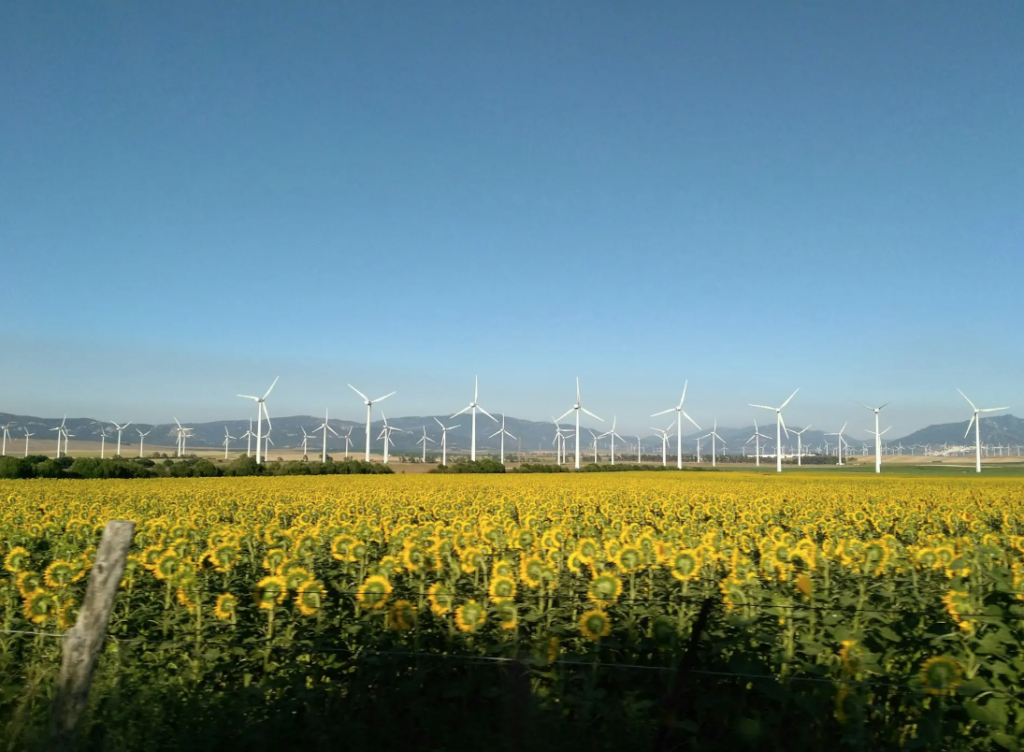The report on EU electricity renewables in 2023 published by Ember
(sustainabilityenvironment.com) – 2023 was a record year for renewable electricity EU, with an important record for wind. For the first time, the generation of electricity from wind turbines has exceeded that from fossil gas, reaching 475 TWh with a jump of 13% (+55 TWh). Last year the share of clean energy in the European electricity mix also reached the highest level ever, standing at 44% and exceeding for the first time the 40% threshold. All this while the fossil generation has collapsed, dragging down also the CO2 emissions that close the year with an important -19%.
EU electricity renewables have made “great strides” confirming that the continent’s electricity transition “is in full swing“, explains the European Electricity Review 2024 published today by think tank Ember.
The leap of renewable electricity EU in 2023
Clean energy generation covered more than 2/3 of EU electricity, double the share of fossil fuels. Thanks mainly to the resumption of hydroelectric and nuclear power, rising after the crash of 2022, together with the increase of wind and photovoltaics.
At the end of the year, the first renewable source for electricity generation in the EU was wind with a share of 17.6%, overtaking fossil gas at 16.8%. Hydroelectric almost overtook the coal, reaching 11.8 and 12.3% of the mix. It closes the photovoltaic with 9.1% of electricity generated in the twenty-seven.
Wind power grew by 17 GW in terms of installed capacity, in line with the 16 GW added in 2022. “However, if the EU is to meet its targets, this spread rate will have to almost double to over 30 GW per year by 2030,” Ember notes. The performance of photovoltaics was substantially positive, growing by 56 GW of installed capacity in 2023 (37% more than in 2022, when it had stopped at 41 GW) but with a growth in electricity generation lower than in 2022 (+36 TWh this year against +48 TWh last year).
Together, wind and photovoltaics have provided for the first time more than ¼ EU electricity, reaching 27% (it was 23% in 2022). “The EU’s electricity system continued its shift to one powered by wind and solar energy as 24% of hours saw less than a quarter of electricity from fossil fuels, compared to just 4% of hours in 2022″stresses the report on EU electricity renewables.
The fossils in free fall
Overall, the fossil generation fell by 209 TWh in 2023. For the first time, it covered less than 1/3 of the European electricity mix. To drag down the fossils is mainly coal with -116 TWh (-26%). Widening the look, the electricity generation from coal halved from 2016 to 2023 losing 327 TWh, offset by +354 TWH of wind and photovoltaic in the same period.
And the downward trend of coal should continue at a fast pace. “Coal plant closures slowed down during the energy crisis, but the structural decline of coal continues as one-fifth of the EU’s coal fleet closes in 2024 and 2025,” Ember notes. The collapse of coal did not lead to an increase in gas, the generation of which fell by 15% to 452 TWh (-82 TWh in one year). It is the largest annual reduction since at least 1990. “This was the fourth consecutive year of declining gas production,” the report stresses.
To facilitate the collapse of fossils and a leap of renewables was also the decline in electricity demand, which marks -3.4% in 2023 compared to the year before and -6.4% on 2021, at the beginning of the energy crisis. But only 1/3 of this decrease can be attributed to the contraction of electricity demand by the industry.

